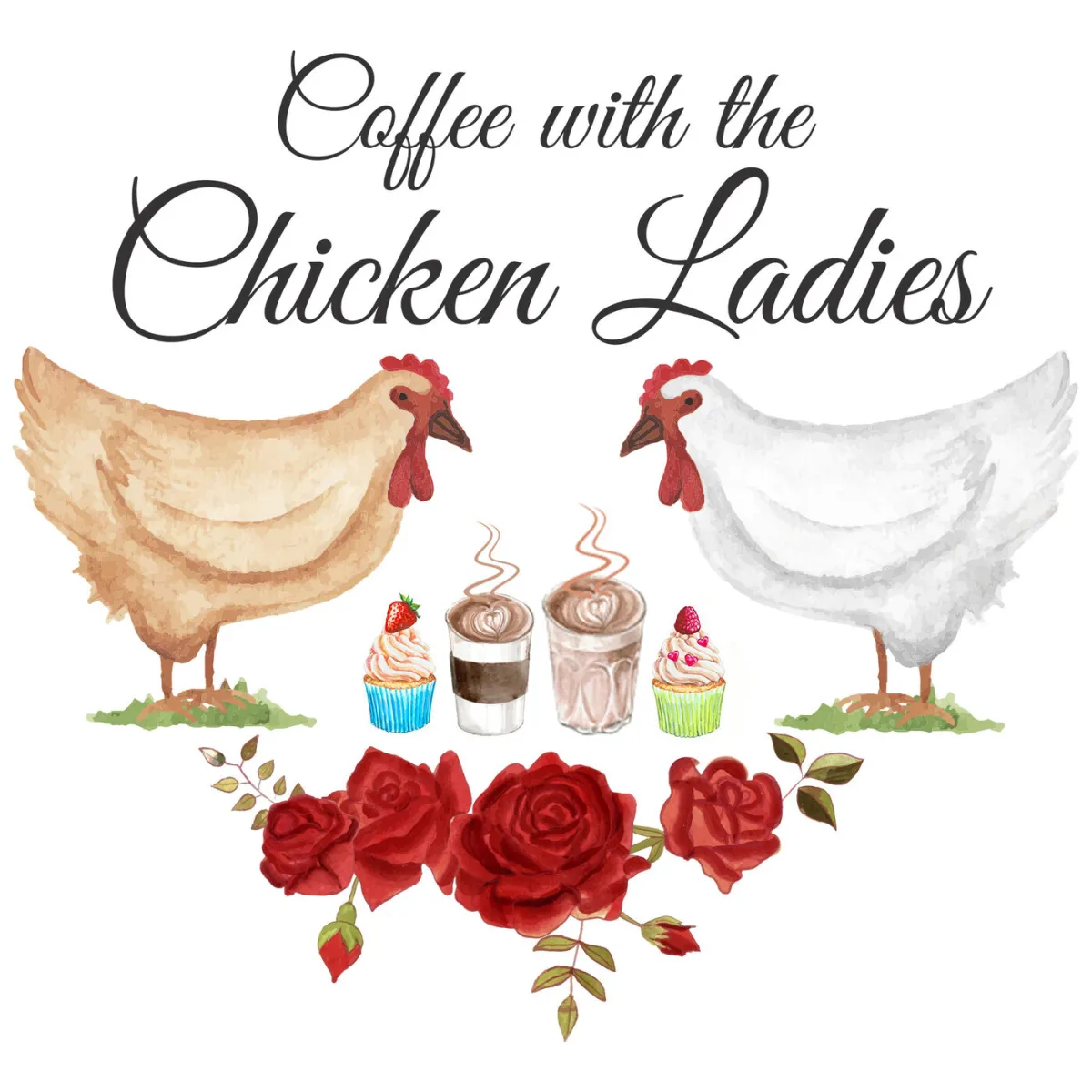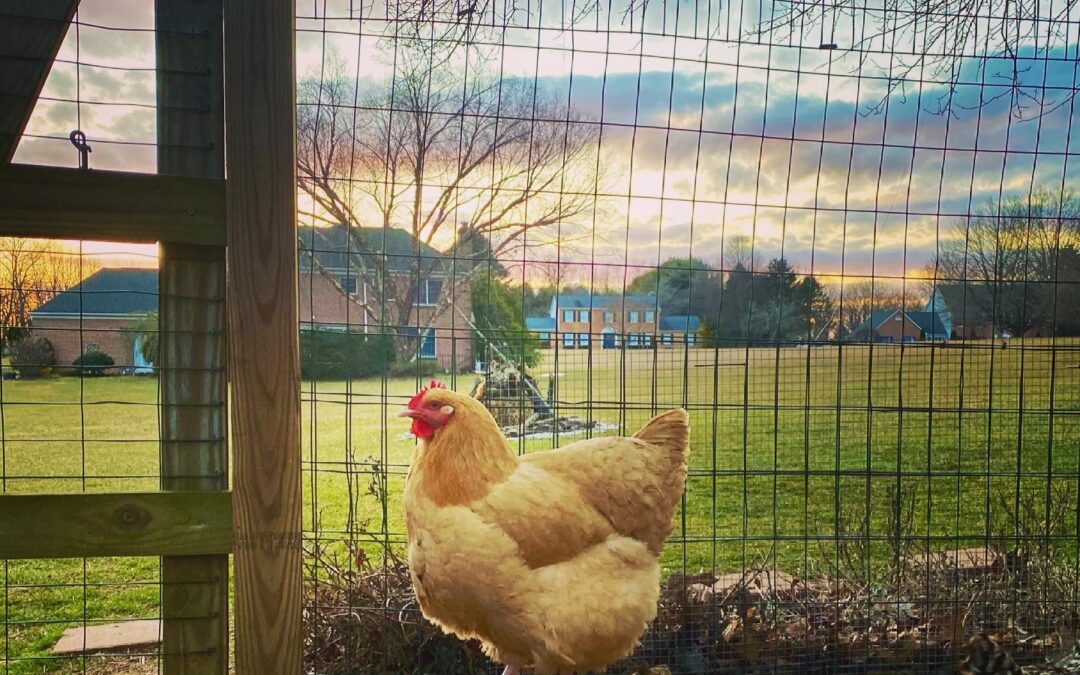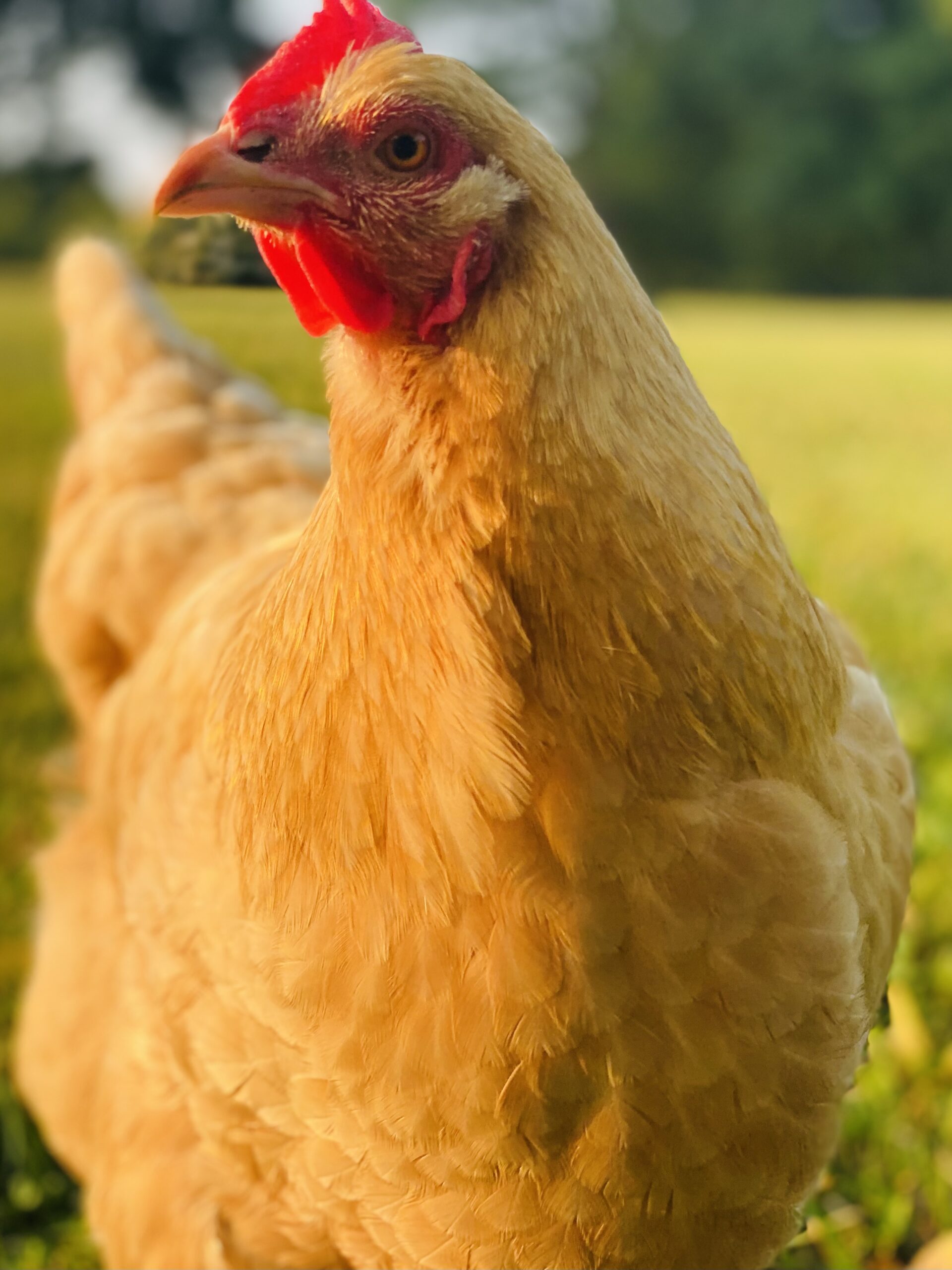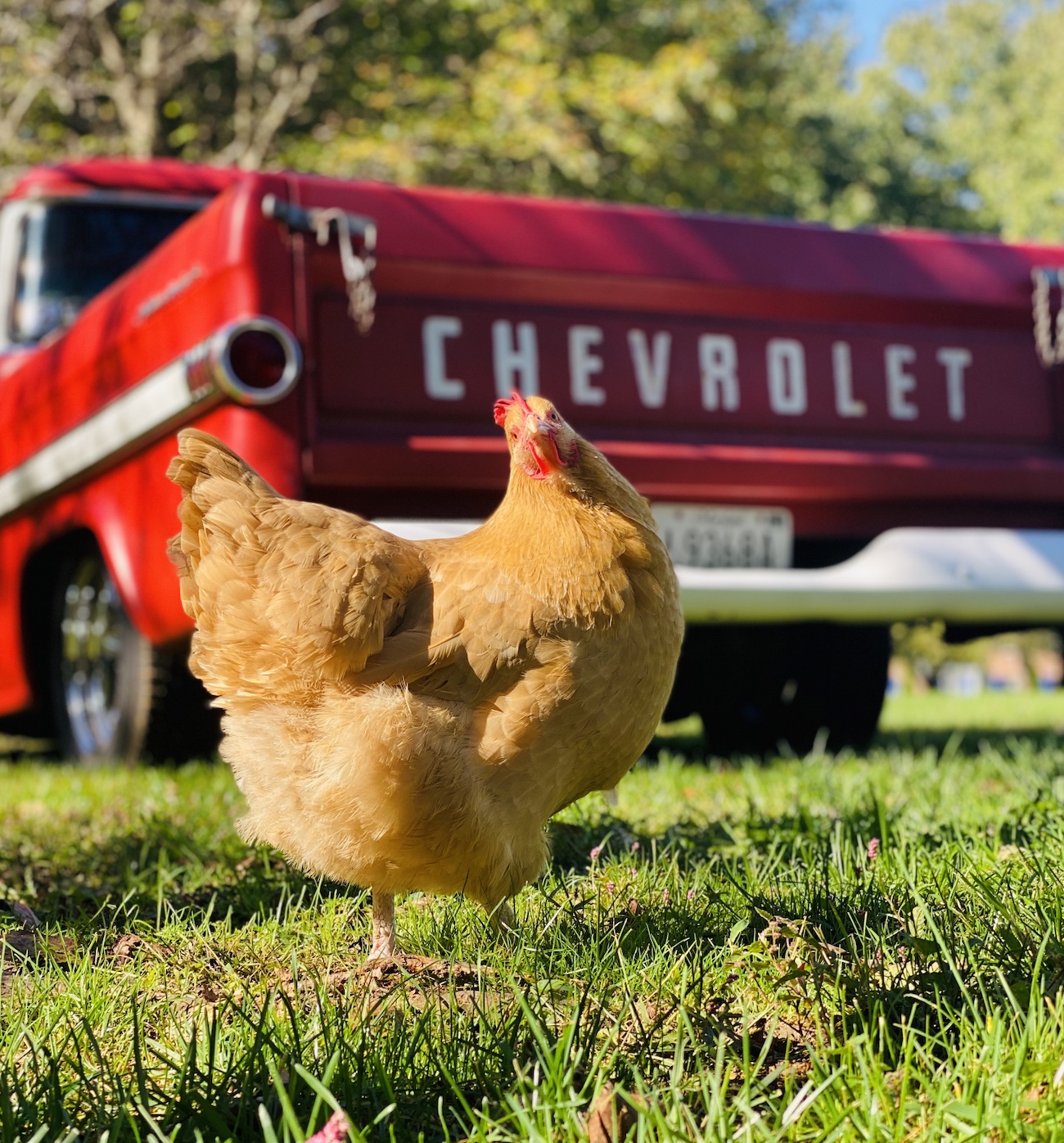The Orpington is one of the best known breeds amongst chicken keepers both old and new. They’re a Heritage breed success story, and a very good option for brand new chicken ladies and men. The Orpington spent some time on the Livestock Conservancy’s Conservation Priority List, and finally graduated in 2016. They are such beautiful and gentle chickens that we cannot help but wonder why they were ever endangered to begin with.
Orpington Heritage Chickens | Basic Breed Information
Orpingtons are a heavy breed known for their profuse, soft feathering in a wide range of beautiful colors. They were developed in the town of Orpington in Kent, England in the late 19th century by William Cook. The Orpington Club of the UK was formed in 1887, and the Orpington first appeared in the American Poultry Association Standard of Perfection in the Buff variety in 1902. This was quickly followed by the Black and White varieties in1905, and the Blue in 1923. These are the four colors you can show in the US. Non-accepted but equally beautiful colors include Chocolate, Lavender, Red, Diamond Jubilee, Cuckoo, Lemon Cuckoo, Spangled/Mottled, Silver Laced, Gold Laced, Partridge, and the exquisite Isabella pattern.
The APA breed standard calls for Orpington roosters to weigh about 10 lbs., and hens should weigh about 8 lbs. They are large birds, but all of those lovely feathers make them appear even larger. Orpingtons have clean pinky-white legs, moderately sized straight combs and wattles, red earlobes, and red faces. They have a deep chest and a long, wide back.
Orpington Heritage Chickens | History
William Cook of Orpington, the breed’s creator, began breeding poultry when he was about 20 years old. The Black Orpington was the first variety he developed by combining Black Langshans, Black Minorcas, and Plymouth Rocks. He had worked for at least 10 years on developing the Black Orpington before he turned his attention to working on the other color varieties. The Buff Orpington quickly followed, and their foundation breeds include Buff Cochins, Golden Spangled Hamburgs, and Dark Dorkings. Somewhere in this same time period, William Cook also developed the beautiful spangled Jubilee Orpington, named for the celebration of Queen Victoria’s 60 years on the throne.
Given the work that Cook put into his poultry breeding, he was not going to leave the breed’s success to chance or fate. By 1886, Cook was satisfied with his Orpington lines and set up shop as a poultry business. The same year, he started publishing William Cook’s Poultry Journal, which was essentially a chicken magazine. He also became active in chicken exhibition circles, and eventually developed Orpington ducks as well. He was a busy guy!
Cook never stopped searching for ways to expand his growing business ideas. He showed his Orpingtons in England, created the first Orpington Club, and eventually presented them at a meet at the Crystal Palace in London. He didn’t stop there, either. He eventually developed a line of poultry (and horse) medications, and even created a bird hospital. At his bird hospital, they also sold feed, vitamins, de-lousing powder, broody/laying coops, poultry housing, and what sounds like everything people needed to keep chickens back in the day!
Orpington Heritage Chickens | A Family Breed
Almost the entire Cook family was involved with the poultry business. Most of Cook’s children had a hand in the business, including a few who went on to establish international branches. His son, Percy Cook, set up and ran a branch of Cook & Sons in New Jersey. Another son ran a branch in South Africa. Elizabeth Jane, the oldest daughter, ran the farm whenever her father was away from home and continued to manage the business for the rest of her life.
Orpingtons had arrived in the US by 1891, and were known as both fantastic backyard farm and show birds. In 1903, William Cook packed up a bunch of his stock and brought them to the US himself. The Buff and the White were especially well received in America, and they added to Cook’s success. Unfortunately, Cook’s wife, Jane, was killed in a gas explosion while he was abroad. He returned to the UK in 1904 and died the day after he arrived home. The cause of death was attributed to emphysema. His legacy in the poultry world lived on through his children and continues today with excellent Orpington lines.
Orpington Heritage Chickens | Laying Statistics
Orpington hens are decent layers of extra large brown eggs. In their first two years, some hens will lay 3-4 eggs per week. This slows down to about two eggs per week as they age. Where these hens truly shine is their mothering ability. Orpingtons will often go broody and are quite skilled at hatching and raising a clutch of chicks. If you are looking for a broody breed to hatch eggs, you will not be disappointed with Orpingtons!
Orpington Heritage Chickens | A Perfect Package
Orpingtons are also well-known for their gentle and friendly personalities and are wonderful with children. They are excellent candidates for therapy chickens and make wonderful companions. Don’t overlook them if you or your 4H or FFA kids are looking for a top notch show bird!
Orpingtons also get along very well in a mixed flock and generally don’t develop bad habits when kept in an average sized run. They do appreciate time out to forage and scratch while supervised. They are not particularly predator savvy and they cannot fly. If you’re looking for a lap chicken, you can end your search here. These cuddly giants are content to snuggle up with their people any time of the day.
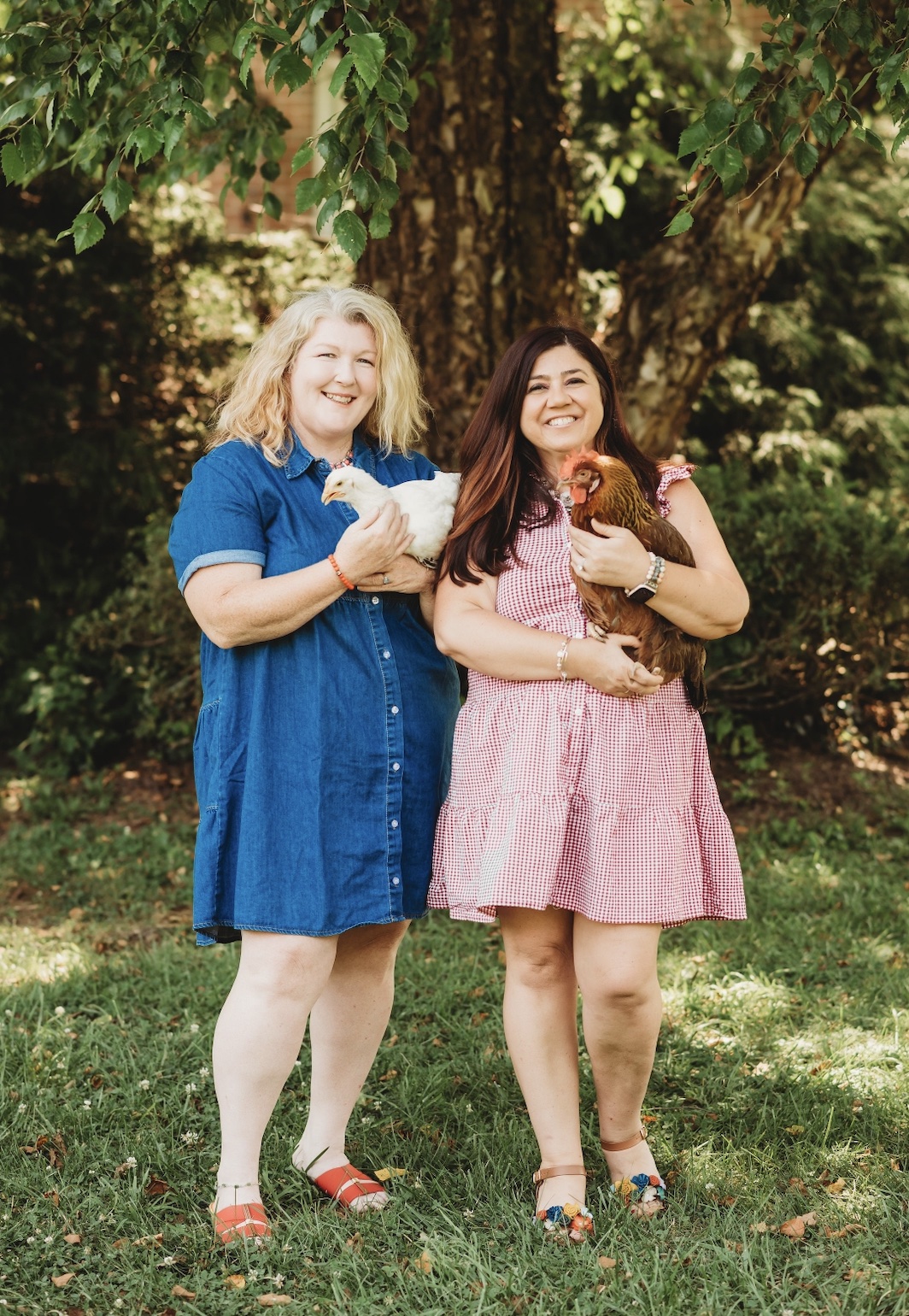
Holly Callahan-Kasmala grew up as a 4-H kid on a small horse farm. She has been keeping chickens for more than 20 years, and is passionate about Heritage chickens and helping people find the right breed for their needs. Holly has an MA in History, and is a long-time fiber artist/teacher. In addition to keeping Heritage breed chickens and rare breed sheep, she also grows heirloom cotton, dye plants, and all kinds of heirloom vegetables, fruit, and flowers on her small Maryland farm. She is the creator and co-host of Coffee with the Chicken Ladies Podcast.
Chrisie DiCarlo is a retired veterinary technician with a passion for helping people care for their poultry. During her 15 years in the field, she managed a technical trauma nursing care team in a busy urban veterinary hospital ER. She gave up her career to be a stay-at-home mom to her two amazing daughters. Chrisie has been keeping chickens for more than 7 years. She also loves growing herbs, fruit, and flowers on her small Maryland farm. She is the creator and co-host of Coffee with the Chicken Ladies Podcast.
Catch up on episodes of Coffee with the Chicken Ladies Podcast, stay up to date on their website, and follow along on social media.
All photos in this post are courtesy of Holly Callahan-Kasmala and Chrisie DiCarlo.
Coffee with the Chicken Ladies Podcast
Coffee with the Chicken Ladies is a weekly podcast hosted by Chrisie DiCarlo and Holly Callahan-Kasmala. The podcast covers all things Pet Chicken! Each episode includes a breed spotlight, a relevant chicken keeping topic, a recipe using fresh eggs, and some retail therapy! The Chicken Ladies also feature interviews with expert guests who span the chicken keeping world. You’ll find the latest podcast episodes on their website, as well as other podcasting platforms.
You can learn more about Heritage Orpington chickens by listening to Episode 2, Episode 66, and Episode 95 of the podcast.
